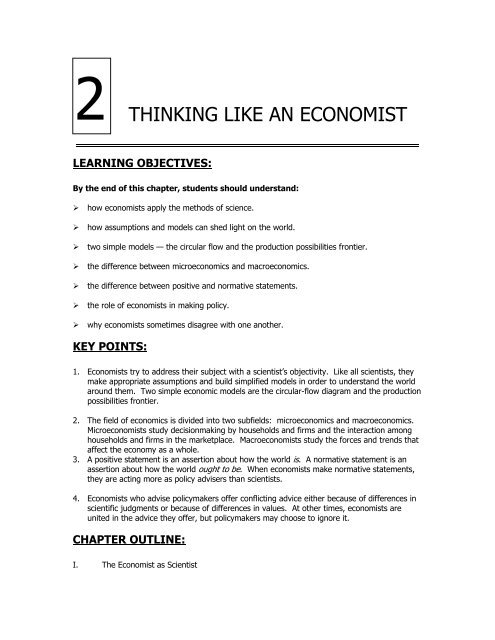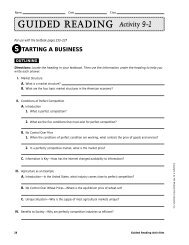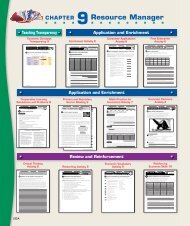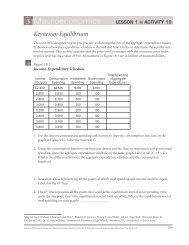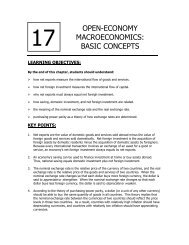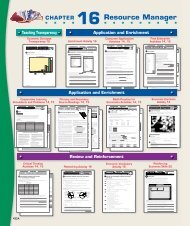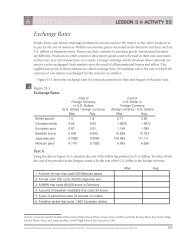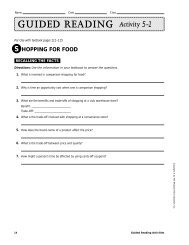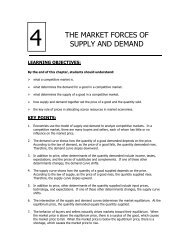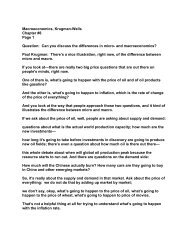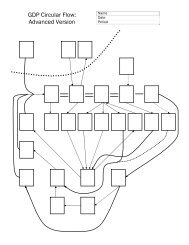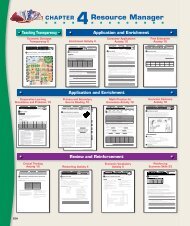Chapter 2 Notes - Rasco.name
Chapter 2 Notes - Rasco.name
Chapter 2 Notes - Rasco.name
- No tags were found...
Create successful ePaper yourself
Turn your PDF publications into a flip-book with our unique Google optimized e-Paper software.
3. Production is efficient at points on the curve. This implies that theeconomy is getting all it can from the scarce resources it has available.4. Production at a point inside the curve is inefficient.5. Production at a point outside of the curve is not possible given theeconomy’s current level of resources and technology.6. The production possibilities frontier reveals Principle # 1: people facetradeoffs.a. Suppose the economy is currently producing 600 cars and 2,200computers. To increase production of cars to 700, theproduction of computers must fall to 2,000.7. Principle #2 is also shown on the production possibilities frontier: thecost of something is what you give up to get it (opportunity cost).a. The opportunity cost of increasing the production of cars from600 to 700 is 200 computers.8. The shape of the production possibilities frontier indicates that theopportunity cost of cars in terms of computers increases as the countryproduces more cars and fewer computers. This occurs because someresources are better suited to the production of cars than computers(and vice versa).9. The production possibilities frontier can shift if resource availability ortechnology changes.F. Microeconomics and Macroeconomics1. Definition of Microeconomics: the study of how households andfirms make decisions and how they interact in markets.2. Definition of Macroeconomics: the study of economy-widephenomena, including inflation, unemployment, and economicgrowth.II.The Economist as Policy AdviserA. Positive Versus Normative Analysis1. Example of a discussion of minimum-wage laws: Polly says, “Minimumwagelaws cause unemployment.” Norma says, “The government shouldraise the minimum wage.”2. Definition of Positive Statements: claims that attempt to describethe world as it is.3. Definition of Normative Statements: claims that attempt toprescribe how the world should be.
. If the demand curve is very flat, quantity desired changes agreat deal when the price changes.2. The slope of a line is the ratio of the vertical distance covered to thehorizontal distance covered as we move along the line (“rise over run”).∆slope = y ∆ x3. The slope of the demand curve tells us something about how aconsumer will react to a change in price.a. A small slope means that the demand curve is relatively flat; alarge slope means that the demand curve is relatively steep.E. Cause and Effect1. Economists often make statements suggesting that a change in VariableA causes a change in Variable B.2. Ideally, we would like to see how changes in Variable A affect Variable B,holding all other variables constant.3. This is not always possible and could lead to a problem caused byomitted variables.a. If Variables A and B both change at the same time, we mayconclude that the change in Variable A caused the change inVariable B.b. But, if Variable C has also changed, it is entirely possible thatVariable C is responsible for the change in Variable B.4. Another problem is reverse causality.a. If Variable A and Variable B both change at the same time, wemay believe that the change in Variable A led to the change inVariable B.b. However, it is entirely possible that the change in Variable B ledto the change in Variable A.c. It is not always as simple as determining which variable changedfirst because individuals often change their behavior in responseto a change in their expectations about the future. This meansthat Variable A may change before Variable B but only becauseof the expected change in Variable B.


